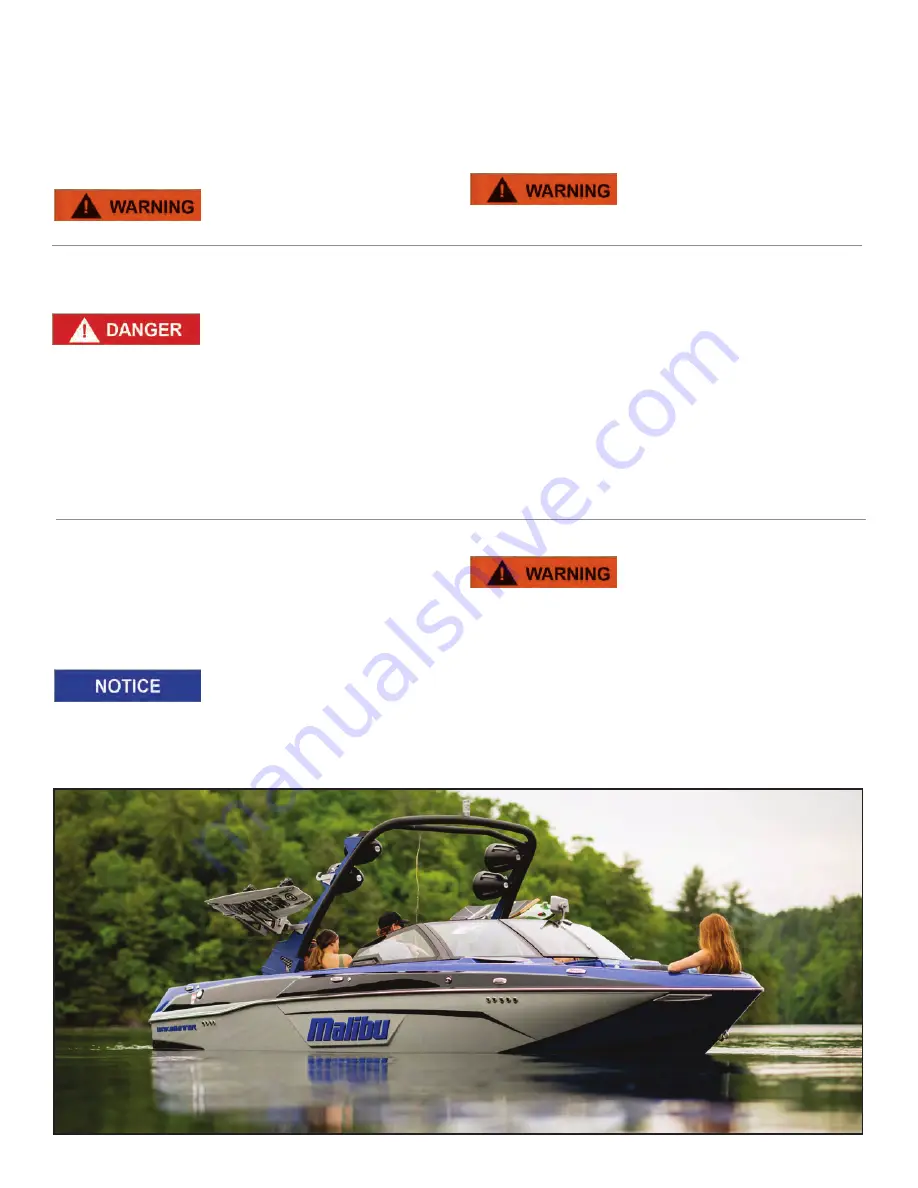
Electronic Throttle Control (ETC)
Never make any alternations or modifi
-
cations to any part of the throttle control
system, including the throttle control.
Such changes render the engine and boat warranties void and may
result in loss of control of the boat, which could result in serious
injury or death.
Although unseen by the boat’s occupants, the Electronic Throttle
Control (ETC) contributes to the boat’s performance in critical fash-
ion. Never make any modifications to the throttle control.
If, for any reason, (unplugged, wire cut, a short, loss of power, or
sensor failure, etc.) any part of the electronic throttle control system
fails, the engine controller will default to idle. The operator will es-
sentially have no control of the throttle and the Engine Fault Alarm
will activate.
If this happens, the operator must turn the ignition key to off, and
then attempt to restart the engine. This will reset the computer area
network. If the condition persists, however, it will be necessary to
take the boat to an authorized Malibu dealer for repair.
Additional information regarding the throttle control’s safe oper-
ation and maintenance is included in additional separate material
that is part of new boat information package.
Models: All models.
Pylon(s)
All models have a pylon located between the lounge lean-backs
and the transom of the boat, except for the Response/TXi, where the
pylon is located in front of the motor box. These pylons, which are
intended for use in wakeboarding and tubing as well as skiing, are
not intended for any other use.
Models: All models.
DO NOT attempt to use the pylon for any
purpose other than towing individuals be
-
hind the boat with an appropriate towing
rope. DO NOT attempt to tow another boat by attaching a rope to the
pylon. This will overload the pylons and can cause damage to the boat
which will not be covered under warranty.
DO NOT allow passengers to sit behind
the pylon whenever someone in the water
is being towed. When the towed individ
-
ual lets loose of the ski/wakeboard rope, the tension may cause the
rope and its tow handle to snap back into the deck area. Individuals
may not be able to deflect the rope, with the result that people hit by
the rope and handle could be injured, especially if they are not paying
attention.
94—How It Works
backward into reverse, pull up on the safety collar located directly
below the throttle lever knob. The safety collar helps avoid uninten-
tional movement into gear.
When shifting gears, always do so smoothly and briskly. Being ei-
ther too hard and slamming the gears, or too tentative is hard on the
shift/throttle system and can result in damage that is not covered
under warranty.
Models: All models.
Do not shift from forward to reverse
while the engine is at high RPM. Dam
-
age to the transmission will result. When shifting from forward to
reverse, the system requires a brief pause in the Neutral position to
allow the engine to return to its idle position prior to moving into
the opposite gear. Without the brief pause, it can also cause the
engine to shut off. The subsequent loss of control can cause damage
to the boat and/or injury to persons in or around the boat.
Before starting the engine or engaging the
transmission, be certain that there are no
people in the water around the boat.
















































